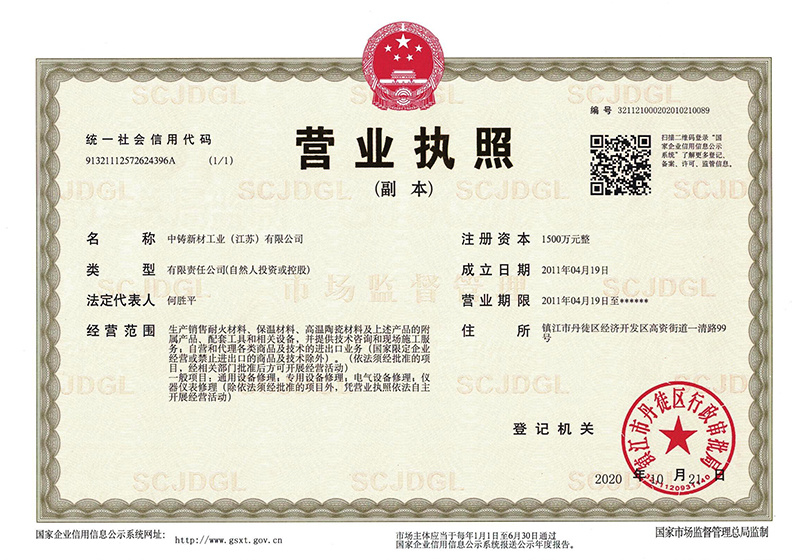News
SINO-FOUNDRY—professional refractory manufacturer
Mastering the Art of Using Refractory Dry Ramming Mass for Building Safety
2025-04-19
Mastering the Art of Using Refractory Dry Ramming Mass for Building Safety In the ever-evolving world of construction, ensuring the safety of buildings against extreme temperatures and fire hazards has become paramount. One of the most effective materials contributing to this safety is **refractory dry ramming mass**. This guide will delve deep into the characteristics, applications, and advantage
Mastering the Art of Using Refractory Dry Ramming Mass for Building Safety
In the ever-evolving world of construction, ensuring the safety of buildings against extreme temperatures and fire hazards has become paramount. One of the most effective materials contributing to this safety is **refractory dry ramming mass**. This guide will delve deep into the characteristics, applications, and advantages of using this exceptional material in the construction sector.
Table of Contents
- 1. Introduction to Refractory Dry Ramming Mass
- 2. What is Refractory Dry Ramming Mass?
- 3. Key Properties and Advantages of Refractory Dry Ramming Mass
- 4. Applications of Refractory Dry Ramming Mass in Construction
- 5. Installation Techniques for Refractory Dry Ramming Mass
- 6. Maintenance Best Practices for Refractory Linings
- 7. Cost-Effectiveness of Using Dry Ramming Mass
- 8. Common Questions About Refractory Dry Ramming Mass
- 9. Conclusion
1. Introduction to Refractory Dry Ramming Mass
As modern architecture and industrial processes become increasingly complex, the demand for materials that can withstand significant thermal stress is on the rise. **Refractory dry ramming mass** is a unique blend designed to provide superior resistance to high temperatures, making it an ideal choice for various construction and industrial applications.
2. What is Refractory Dry Ramming Mass?
Refractory dry ramming mass consists of a mixture of granulated materials, binders, and additives that can be compacted to form a solid mass. Unlike conventional materials, this ramming mass is specifically engineered to endure extreme heat, making it invaluable in sectors such as steel manufacturing, petrochemicals, and even fortifying building structures.
This versatile material is primarily known for its high melting point, excellent thermal stability, and robust mechanical properties. When properly applied, it can significantly enhance the fire resistance of a structure, thereby protecting both the building and its occupants.
3. Key Properties and Advantages of Refractory Dry Ramming Mass
High Thermal Resistance
One of the standout features of refractory dry ramming mass is its ability to withstand high temperatures without degrading. This characteristic is essential in environments where heat exposure is a daily occurrence, such as foundries and furnaces.
Mechanical Strength
In addition to thermal resistance, this material exhibits impressive mechanical strength, which makes it suitable for heavy-duty applications. It retains its structural integrity under stress, ensuring long-lasting performance.
Ease of Installation
The installation process for refractory dry ramming mass is relatively straightforward compared to other refractory materials. It can be rammed into place using standard tools, streamlining the construction process and reducing labor costs.
Cost Efficiency
While the initial investment in refractory dry ramming mass may be higher than that of traditional materials, its long lifespan and low maintenance requirements lead to significant cost savings over time.
Environmental Resistance
This material is also resilient against various environmental factors, including chemical corrosion and physical wear. As a result, it is suitable for use in a variety of industrial settings where exposure to harsh conditions is common.
4. Applications of Refractory Dry Ramming Mass in Construction
Refractory dry ramming mass is utilized in numerous applications within the construction and industrial sectors. Below are some key areas where this material shines:
Furnaces and Kilns
In industrial settings, refractory dry ramming mass is commonly used to line furnaces and kilns, providing a robust barrier against extreme temperatures and facilitating efficient heat retention.
Chimneys and Stacks
The material’s excellent thermal resistance makes it an ideal choice for constructing chimneys and stacks, ensuring that flue gases are safely expelled without damaging the structural integrity of the building.
Industrial Ovens
Industries that utilize ovens for processes like baking, drying, or curing greatly benefit from the use of refractory dry ramming mass. It helps maintain high temperatures while ensuring safety and energy efficiency.
Hot Process Equipment
In environments with hot process equipment, this refractory material provides an essential barrier, protecting both the equipment and surrounding structures from heat damage.
Building Fire Safety Enhancements
In residential and commercial buildings, using refractory dry ramming mass in walls and ceilings significantly enhances fire safety, providing occupants with crucial additional minutes to evacuate in case of an emergency.
5. Installation Techniques for Refractory Dry Ramming Mass
The installation of refractory dry ramming mass involves several key steps to ensure optimal performance and longevity. Here’s a detailed breakdown of the process:
Preparation of the Substrate
Before applying the ramming mass, it is essential to prepare the substrate thoroughly. This involves cleaning the surface and repairing any existing damage to ensure a solid foundation for the mass.
Mixing the Ramming Mass
The dry ramming mass must be mixed according to specific guidelines. The right proportions of additives and binders are crucial to achieving the desired properties, including thermal stability and mechanical strength.
Ramming the Material
Once mixed, the dry ramming mass is compacted into place using pneumatic tools or manual ramming techniques. It’s vital to ensure uniform density throughout the application to achieve maximum heat resistance.
Curing Process
After installation, the ramming mass needs to cure. Curing ensures that the material achieves its full strength and thermal properties. This process typically involves maintaining adequate moisture levels and temperature for a specified duration.
6. Maintenance Best Practices for Refractory Linings
Ensuring the longevity and performance of refractory dry ramming mass involves regular maintenance and monitoring. Below are best practices to follow:
Regular Inspections
Routine inspections can help identify any signs of wear or damage early on. Look for cracks, spalling, or discoloration, as these may indicate that repairs are needed.
Prompt Repairs
If any damage is detected, it is crucial to address it promptly. Minor repairs can often be made without replacing the entire ramming mass, saving both time and money.
Cleaning
Keeping the surface of the refractory lining clean enhances its performance and longevity. Regularly remove any debris or buildup that could affect heat transfer and efficiency.
Monitoring Temperature
Monitoring temperature fluctuations can help prevent overheating and damage. Installing temperature sensors can provide real-time data, allowing for timely interventions if needed.
7. Cost-Effectiveness of Using Dry Ramming Mass
While the initial costs associated with refractory dry ramming mass may seem higher compared to traditional materials, the long-term benefits often outweigh these initial expenses. Here are several factors contributing to its cost-effectiveness:
Reduced Maintenance Costs
Due to its durability and low maintenance needs, refractory dry ramming mass can lead to significant savings over time. Fewer repairs and replacements mean lower overall expenses.
Energy Efficiency
By maintaining optimal heat retention, buildings using refractory dry ramming mass can achieve greater energy efficiency. This translates to lower heating and cooling costs, further enhancing its economic viability.
Longevity
The extended lifespan of refractory dry ramming mass means that it does not require frequent replacement, providing a cost-effective solution for high-temperature applications.
8. Common Questions About Refractory Dry Ramming Mass
What industries commonly use refractory dry ramming mass?
Refractory dry ramming mass is predominantly used in industries such as steel manufacturing, petrochemicals, ceramics, and in various high-temperature construction applications.
How does the installation process differ from other refractory materials?
The installation of refractory dry ramming mass is typically less labor-intensive than other refractory materials, as it requires straightforward ramming techniques rather than extensive curing or setting times.
Are there specific safety measures to follow during the installation?
Yes, standard safety precautions should be adhered to, including wearing protective gear, ensuring proper ventilation, and following the manufacturer's guidelines to prevent health hazards.
Can refractory dry ramming mass be used in residential applications?
Absolutely! This material can enhance fire safety in residential buildings, particularly in areas like fireplaces, chimneys, and heat-generating appliances.
What is the expected lifespan of refractory dry ramming mass?
When installed and maintained correctly, refractory dry ramming mass can last for several years, often exceeding a decade, depending on the application and environmental conditions.
9. Conclusion
Mastering the art of using **refractory dry ramming mass** is essential for architects, builders, and safety professionals aiming to enhance building safety against fire and extreme temperatures. With its superior thermal resistance, mechanical strength, ease of installation, and cost-effectiveness, this material stands as a pillar of fire safety in modern construction. By understanding its properties, applications, and maintenance practices, we can ensure that our structures not only meet but exceed safety standards, ultimately protecting lives and investments alike.
Related News
2024-11-05
Zhongzhu New Materials Industry sincerely invites you to participate in the 24th International Forum and Exhibition on Recycled Metals.

WeChat public account

View mobile website
Address : No. 99, Yiqing Road, Gaozi Street, EconomicDevelopment Zone, Dantu District, Zhenjiang City
Fax : +86-511-85683066
E-mail : sales@sfr168.com
Website : https://www.sfr168.com
Copyright©2023 Sino-Foundry Refractory(Jiangsu) Co.,Ltd. Powered by:www.300.cn
Copyright©2023 Sino-Foundry Refractory(Jiangsu) Co.,Ltd.
IPV6 | SEO | Cloud Information



